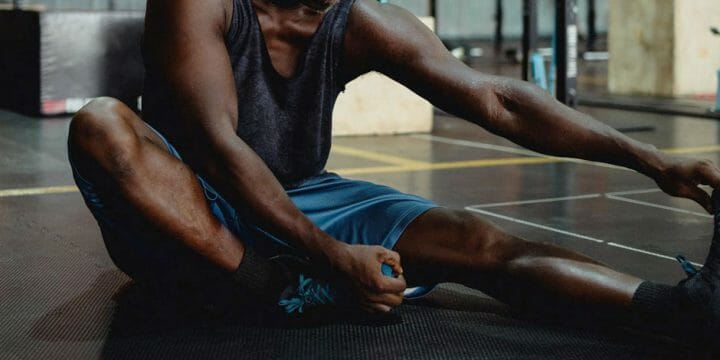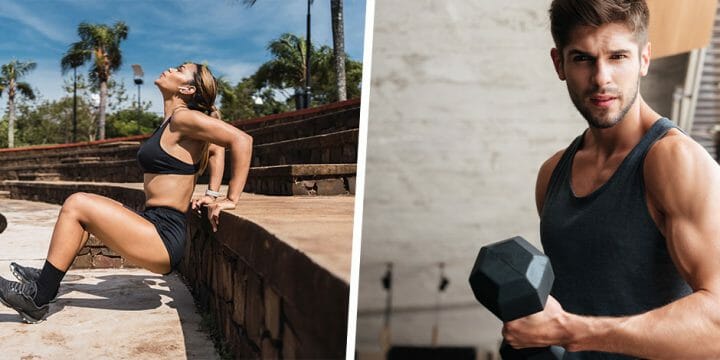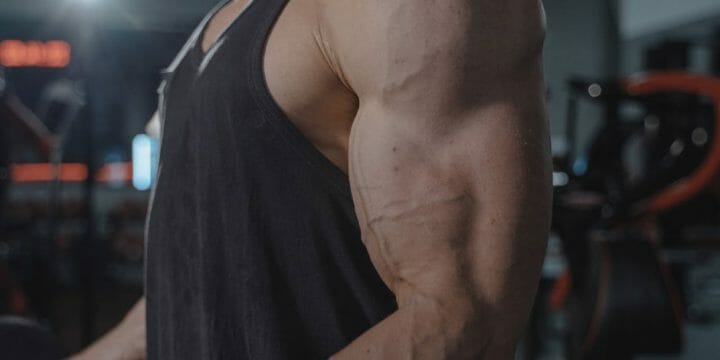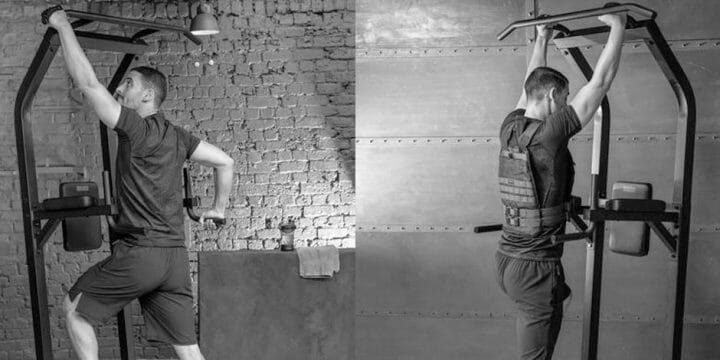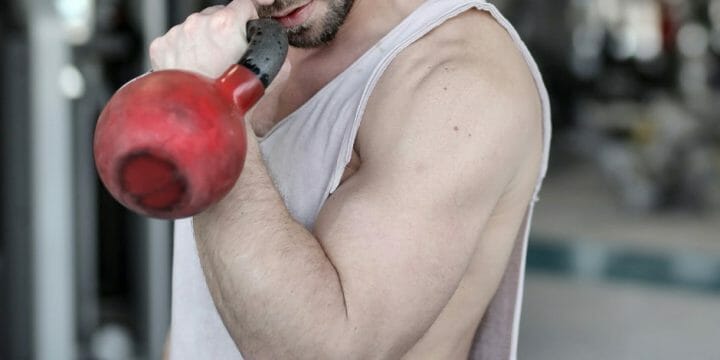It's common to focus on prominent muscle groups, but overlooking smaller muscles like the teres major can hinder your strength-building journey.
Incorporating targeted exercises for these muscles is essential.
In this post, I’ve compiled effective teres major exercises to enhance shoulder strength.
Let’s dive in!
Quick Summary
- Enhance your teres major strength and shoulder stability with targeted exercises like bent-over dumbbell rows, face pulls, and pull-ups.
- The teres major and minor muscles, although smaller, play a crucial role in arm movement and shoulder stability, complementing the larger muscles.
- The teres major, along with other muscles, controls arm movement around the rotator cuff and prevents the humeral head from sliding out of position, as highlighted by the National Library of Medicine.
- In my opinion, targeting the teres major is essential for a comprehensive upper body workout, contributing significantly to overall shoulder health and strength.
What Exercises Work The Teres Major?
Compound exercises often engage the teres major, but they primarily stress larger muscles. Including specific teres major exercises weekly ensures balanced development.
As you embark on these exercises, being aware of common mistakes and pitfalls is crucial. Ensure proper form and technique to not only maximize the benefits but also minimize the risk of injury. Tailoring your approach and being mindful of your body’s responses can make a world of difference in your teres major strengthening journey.
1. Bent-Over Dumbbell Rows (3 sets of 12 reps each side)
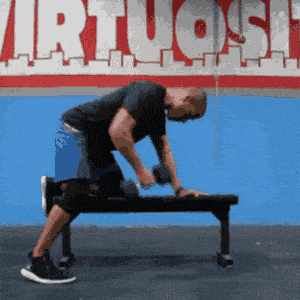
The single-arm dumbbell row is my go-to exercise for the back and shoulder muscles.
- Get into the starting position by standing with your feet shoulder-width apart.
- Take one step forward, dip your left shoulder down, and rest your left arm on your left knee.
- Grab hold of a dumbbell with your right hand and then slowly pull it up to your chest.
- Hold the tension for a second and then lower it back down again.
2. Face Pulls (3 sets of 12 reps)
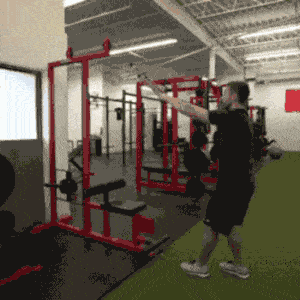
I prefer doing these with the rope handles, but you can use any kind of handle that keeps your hands close together.
- Get into the starting position with the cable machine set up at face height.
- Stand far enough away so that your stretched-out arms get a small bit of tension on the cable.
- Pull the handle straight to your face and let the elbows flare out.
- Slowly release the tension.
3. T-Bar Cable Rows (3 sets of 12 reps)
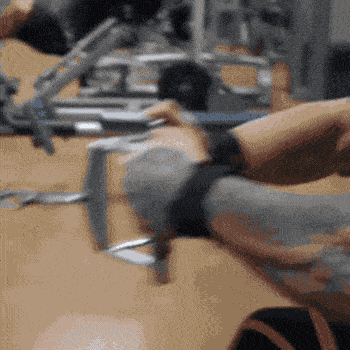
Sticking with the cable machine, let's switch to the seated cable rows.
- Get into the starting position with the T-bar handle at chest height and your arms straight.
- Use an underhand grip, pull the handle towards your chest, and feel the tension between your shoulder blades.
- Slowly return the handle to the starting point.
- Alternatively, switch to an overhand grip.
Related Article: How To Do T-Bar Rows
4. Straight Arm Pulldowns (3 sets of 12 reps)
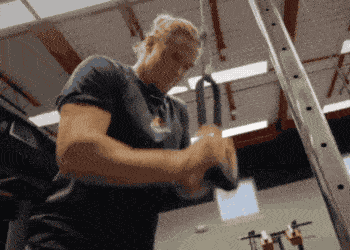
Use the same wide bar you would for a lat pulldown for this effective teres major exercise.
- Get into the starting position with your hands on the bar at about shoulder height.
- Keep your body still and slowly push your hands down as far as hip height.
- Hold the lowest point for a second and then slowly release the tension.
5. Pull-Ups (3 sets to failure)
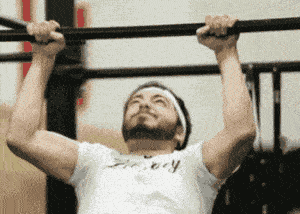
And finally, try adding some bodyweight pull-ups.
- Start with a wide-grip setup and your palms facing away from you.
- Slowly pull yourself up until your chin reaches the bar and hold for a second.
- Then lower yourself back down again and feel the burn across your back.
Teres Major Anatomy
The teres major muscle and teres minor muscle run in parallel from the shoulder blade and attach to the upper arm bone. They are much smaller than the dominant latissimus dorsi, which also originates at the shoulder blades [1].
I remember when I first learned about this intricate anatomy; it was a game-changer in understanding how to effectively target and train these muscles for optimal performance.
Collectively, these muscles control the movement of the arm around the rotator cuff and stop the humeral head from sliding out of position, according to the National Library of Medicine [2]. And that's important for many different other exercises.
The more strain you place through a weight-lifting routine on shoulder adduction, the more support you need to stabilize the joint. And that's why it's important to strengthen the teres muscles regularly.
What Is The Main Function Of The Teres Major?
The main function of the teres major is to facilitate shoulder movement and arm rotation, according to the Physiopedia [3].
I recall the ‘aha’ moment when I made the connection between this function and the enhanced range of motion I experienced in my shoulders after consistently training my teres major.
It also plays a role in supporting the rotator cuff joint during strenuous movements so that the arm bone doesn't pop out of the joint socket.
"Teres major (TM) is a small muscle that runs along the lateral border of the scapula. It is one of the seven scapulohumeral muscles that act around the glenohumeral joint to facilitate shoulder movement. It's sometimes called "lat's little helper" because of its synergistic action with the latissimus dorsi."
- Physio-pedia.com
Other Teres Major Training Tips

While we've covered a range of exercises to strengthen the teres major, it's essential to underscore the pivotal role of nutrition in muscle development.
Incorporating a balanced diet rich in proteins, vitamins, and minerals can significantly augment the effectiveness of your workout regimen, ensuring your muscles have the necessary building blocks for growth and recovery.
I’ve personally experienced the transformative power of a balanced diet; it turned my decent workouts into highly productive sessions, each meal fueling my teres major’s journey to enhanced strength and definition.
Consider a high-quality whey protein supplement if you're serious about bulking up and gaining mass on any part of your body.
These exercises are your toolkit for enhanced shoulder stability. Remember, integrating varied routines and personalized tips will pave the way to your ultimate fitness achievements.
Reps and Sets
I provided some guidelines for reps and sets above, and I suggest that most people target the teres major from a muscle-building approach.
This is not a muscle that will change your physique much, but strengthening it can help you with other upper body exercises [4].
My own journey of experimenting with different reps and sets led me to a sweet spot where muscle engagement and growth were maximized without overstraining.
Training Frequency
Include a teres major exercise in your shoulder and upper arm training sessions. A weekly focus ensures targeted strength building.
Training Variation
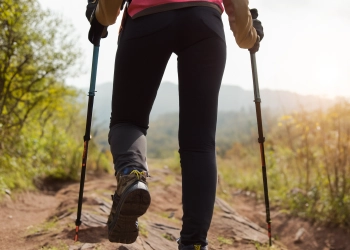
Balance is key; incorporate both teres major and minor exercises into your routines. Keep things fresh and engaging by alternating exercises weekly, ensuring comprehensive muscle engagement.
I’ve personally found that this variation not only keeps my workouts exciting but also ensures a well-rounded development of these muscles, enhancing both strength and aesthetics.
And if you need some more tips and getting bigger shoulders, then check out this guide.
FAQs
Are Teres Major Injuries Common?
No, teres major injuries are not common. The main reason you might encounter problems is when you place a very repetitive strain through the same exercises or movements on a very regular basis.
Does the Teres Major Support Your Posture?
Yes, the teres major muscle supports your posture by stabilizing your shoulder joints. However, it's not the most critical muscle for better posture, and you may need to strengthen your entire back and core for a good standing and sitting posture.
References:
- https://www.physio-pedia.com/Latissimus_Dorsi_Muscle
- https://www.ncbi.nlm.nih.gov/books/NBK441844/
- https://www.physio-pedia.com/Teres_Major
- https://www.kenhub.com/en/library/anatomy/teres-major-muscle
About The Author
You May Also Like
